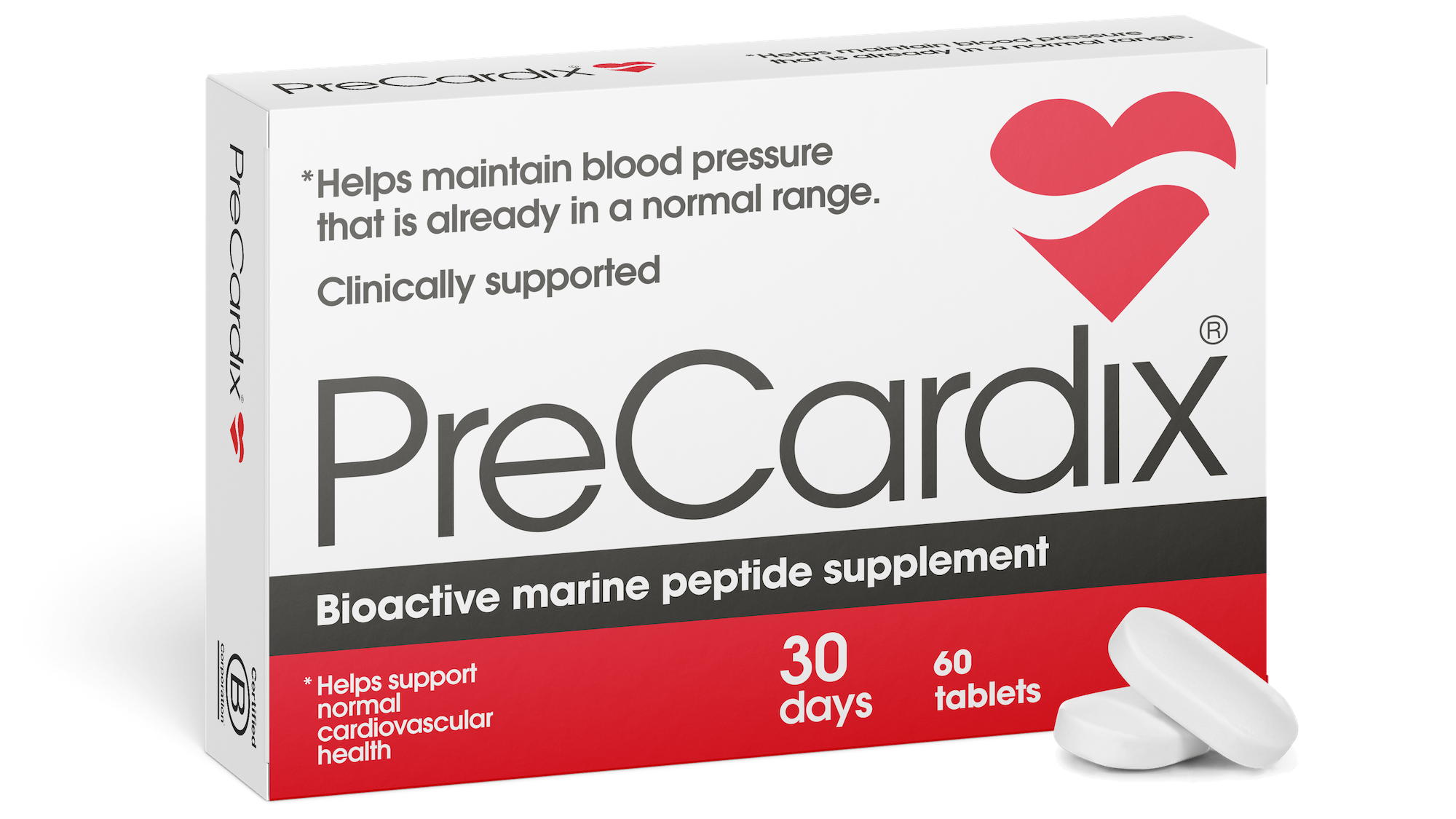How diet helps you manage blood pressure.
Mediterranean Diet | Hypertension | Lifestyle and Blood Pressure
The Mediterranean diet is one of the most researched diets for preventing and treating cardiovascular disease, including hypertension, heart attacks, and stroke1. Research began in the 1960s, with observational studies comparing the low rates of heart disease in countries like Italy and Greece to the much higher rates in Northern Europe and the United States1. The primary difference between these geographical locations? The food that they ate!
Hypertension Canada recommends lifestyle change as a first-line treatment option for elevated blood pressure. Examples of lifestyle change include achieving adequate exercise levels, stress reduction, smoking cessation and targeted dietary interventions, like the Mediterranean diet or DASH diet. Making small but consistent changes in your lifestyle choices can lead to impactful decreases in your blood pressure, reducing your risk of cardiovascular events like a heart attack or stroke.
What is the Mediterranean Diet?
The Mediterranean diet centres on fresh vegetables and fruit, whole grains, fish and seafood, legumes (think lentils, chickpeas, other beans), nuts and extra virgin olive oil. Red meat and processed meat are limited, and dairy-containing foods (like milk and cheese) are moderated2.
This diet is in direct contrast to the Standard American Diet (SAD), high in red/processed meat, dairy products, and processed grains (like white bread and cereal), all of which are known risk factors for cardiovascular disease2. By its nature, the Mediterranean diet is high in fibre (from whole grains, legumes, vegetables and fruit) and healthy fats (from nuts, olive oil and fish), both of which are known to have cardiovascular benefits2.
How effective is the Mediterranean Diet?
The most effective diet for blood pressure reduction is the Mediterranean diet with additional olive oil or nuts to increase the heart-health benefits of unsaturated fats1. There have been hundreds of studies on the Mediterranean diet over the years with data collected on its impact on reducing LDL cholesterol (the ‘bad cholesterol associated with heart disease), risk of heart attack and stroke and its ability to lower blood pressure1.
In one study, systolic blood pressure improved by 4.5 mmHg2 after one year of following the Mediterranean diet. While this doesn’t sound significant; each 5 mmHg reduction in blood pressure leads to a:
- 14% reduction in mortality due to stroke3
- 9% reduction in mortality due to Coronary Heart Disease3
- 7% reduction in all-cause mortality (death for any reason)3
Notably, the Mediterranean diet provides benefits for primary and secondary prevention of cardiovascular disease1, which means that even if you don’t have high blood pressure, it can help reduce your risk of developing hypertension. If you have high blood pressure or a history of heart attack or stroke, the Mediterranean diet can help prevent another cardiovascular event from occurring1.
Mediterranean Diet by Food Group and Serving Size
The table below provides a more detailed description of the foods recommended as part of a Mediterranean diet, including suggested servings and serving size examples for easy incorporation into your diet. A key part of the Mediterranean diet is consuming heart-healthy unsaturated fats which are found in plant-based sources like; olive oil, flaxseed oil, nuts and seeds. This replaces the high amount of saturated fat commonly consumed in the standard North American diet like red meat, cheese and butter. Fats are an important part of our diet and should make up about 35-40% of your total caloric intake. Fats help to keep us full, they curb cravings and allow us to make healthier food decisions throughout the day.
Diet Breakdown
Food Group |
Servings |
Tips |
Vegetables |
4 or more servings per day. | 1 serving is 1 cup raw or ½ cup cooked vegetables. Eat a variety of colours and textures.
Green = broccoli, asparagus, Brussel sprouts, spinach, arugula. Orange = carrots, peppers, sweet potatoes. Red/purple = radishes, eggplant. |
Fruits |
3 or more servings per day. | 1 cup of fruit or ½ cup of dried fruit. Switch your usual desserts with fruit or make it part of your breakfast.
Fresh berries are a staple in the Mediterranean diet; include blueberries / blackberries / raspberries at least 1x / day. |
Fats/Oils |
4 or more tablespoons per day. | 1 serving is 1 tbsp of oil or nut/seed butter (almond, sunflower, sesame).
Choose extra virgin olive oil and include it in salad dressings and cooking. Choose avocado or natural nut butter instead of butter or margarine. |
Dried beans / nuts / seeds
|
Nuts/seeds: 3 or more servings per week.
Beans/legumes: 3 or more servings per week. |
1/3rd cup (1.5oz) of nuts (almonds, walnuts, cashews).
2 tbsp of nut butter (almond, peanut, cashew). 2 tbsp (0.5oz) of seeds (sunflower, pumpkin, chia, hemp, flax). 1 serving of beans is 1/3 cup. Try; lentils, chickpeas, black beans, kidney beans. |
Whole Grains |
1-2 servings per day
|
1 serving is ½ a cup of cooked grains or 1 piece of toast.
Try oats, brown rice, quinoa, whole wheat bread/pasta, and couscous. |
Fish and seafood
|
2-3 times per week. | 1 serving is 3 oz; choose wild-caught low mercury fish: salmon, herring, mackerel, anchovies, sardines, pollock. |
Herbs and spices
|
Use daily in dishes. | Season foods with herbs, garlic, onions, and spices in place of salt. |
Yogurt / cheese / eggs / poultry
|
Choose 4-6 times per week | 1 serving is 1 cup of milk or yogurt. Choose low-fat yogurt and cheeses when possible.
1 serving is 3 oz of lean cooked meat; like chicken or turkey, choose these options over red meat when possible. |
Red / processed meat |
A few times per month | 1 serving of meat is 3 oz (about the size of a deck of cards). Limit beef, pork, and processed meats (think deli meat) to a single serving a few times per month. |
Sweets and desserts
|
A few times per week (or less!) | Be mindful of foods with added sugar; this includes soda, many packaged foods, and sweets and desserts. |
Shifting your Diet Effectively and Economically
Changing your diet can feel overwhelming, and habit change takes time. The best way to start? Add in one healthy habit to your current diet each week; here are some easy examples to get you started:
- Learn basic cooking skills like how long to boil green beans or bake fish and chicken.
- Reduce fast food consumption and dine out less frequently.
- If red meat is a staple in your diet, switch it out for fish one or two times/week and cut your red meat portions in half.
- Whitefish like haddock and cod are inexpensive options; canned tuna or salmon are convenient & budget-friendly but should be limited to 1-2x/week.
- Use herbs and spices (especially fresh herbs like basil, rosemary, oregano) instead of salt to add flavour to foods.
- Dried herbs are inexpensive and have a long shelf life, making them a great staple to add to your cupboard.
- Cook with olive or avocado oil instead of butter or oils that are high in saturated fat (red meat, whole fat dairy, butter, lard).
- Try topping your salads with 1 tbsp of olive oil or lemon juice rather than salad dressings.
- Try using mashed avocado or hummus rather than mayonnaise on sandwiches or as a dip for veggies.
- Making hummus at home is simple and inexpensive! Check out this great recipe to make it yourself.
- Top your salad with seeds and nuts rather than cheese.
- Try sunflower or pumpkin seeds for a budget-friendly salad topper.
- Switch out your white bread or pasta for whole-grain alternatives and white rice for brown rice or quinoa.
- Oats are an inexpensive and high fibre grain that can be used as an alternative to flour in baking and on their own as a nutritious breakfast.
- Add 1-2 tbsp of ground flaxseed to oats, low-fat yogurt, and smoothies.
- Buying whole flax seeds and grinding them yourself (with a small blender or coffee grinder) is a more economical way of including these in your diet.
- Choose one day a week that will be ‘meatless.’ Try a pasta sauce with lentils rather than ground beef, or switch out your morning bacon and eggs for steel-cut oats and berries.
- Vegetarian proteins are budget-friendly! Dried beans like lentils or chickpeas are a much cheaper alternative to animal proteins.
- Have a sweet tooth? Try a piece of fruit for dessert instead of a piece of cake. A handful of berries, a banana with almond butter, or a few pieces of dried fruit can satisfy the craving.
- Frozen berries like blueberries and raspberries are a convenient and economical way to curb cravings!
Snacks to Keep you on Track
One of the most challenging parts of a whole foods diet is finding quick and satisfying snacks to keep you full between meals and on the go! Here are three simple and delicious ideas to make the transition easier.
- Raw vegetables and hummus. Cut up carrots, celery and peppers and keep them in a jar with some water in the fridge (this helps keep them fresh!). Dip them in 1-2 tbsp of hummus for a satisfying and healthy snack!
- Apple slices and almond butter. A quick snack that may also help satisfy your sweet tooth try adding a sprinkle of cinnamon or cocoa powder for extra flavour and fun!
- DIY trail mix. Use a mixture of your favourite seeds and nuts like walnuts, sunflower seeds, pumpkin seeds, almonds, plus add in a few raisins, cranberries or other dried fruits. Trail mix is a great option to keep in your car, desk drawer or purse for on-the-go snacking.
More than Just a Diet
The Mediterranean diet is more than just what you put into your body. It’s also about the lifestyle that accompanies it. Lifestyle includes consuming reasonable portion sizes (see the table above for more information), being mindful while eating (ex. sitting down, not watching TV, or using your phone), and eating with others. It also includes movement, including 150 minutes of moderate to vigorous exercise/week is critical for heart health and overall wellbeing. Exercise includes walking, cycling, swimming, gardening, and even vacuuming! Take a page from our Mediterranean neighbours and make movement part of your everyday life.
References
- Rees K, Takeda A, Martin N, Ellis L, Wijesekara D, Vepa A, Das A, Hartley L, Stranges S. Mediterranean-style diet for the primary and secondary prevention of cardiovascular disease. Cochrane Database of Systematic Reviews 2019, Issue 3. Art. No.: CD009825. DOI: 10.1002/14651858.CD009825.pub3
- De Pergola G, D’Alessandro A. Influence of Mediterranean Diet on Blood Pressure. Nutrients. 2018;10(11):1700. Published 2018 Nov 7. doi:10.3390/nu10111700
- Bundy JD, Li C, Stuchlik P, et al. Systolic Blood Pressure Reduction and Risk of Cardiovascular Disease and Mortality: A Systematic Review and Network Meta-analysis. JAMA Cardiol. 2017;2(7):775-781. doi:10.1001/jamacardio.2017.1421
- Baum, I. (2021, June 28). Here’s what a healthy plate looks like on the Mediterranean diet. Well+Good. https://www.wellandgood.com/mediterranean-diet-macros-portions/.
Important Information
Always consult with your healthcare provider before making changes to your blood pressure management plan. PreCardix® does not treat, cure, or prevent medical conditions. Measure and monitor blood pressure regularly. Know the signs of heart attack and stroke.
Do not take PreCardix® if you are pregnant, breastfeeding, have renal artery stenosis, have a history of angioneurotic edema, or have a shellfish allergy. Consult product guidelines for additional information. Print and share the product monograph with your healthcare provider.
PreCardix® is an innovation of Marealis Inc. a Norwegian Bio-Tech company dedicated to finding natural, sustainable, and effective marine-based solutions for blood pressure health, globally. Designed in Norway. Manufactured in North America.












